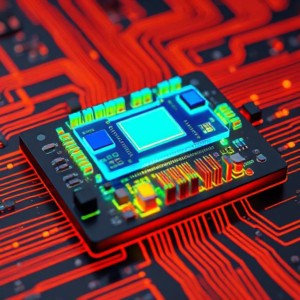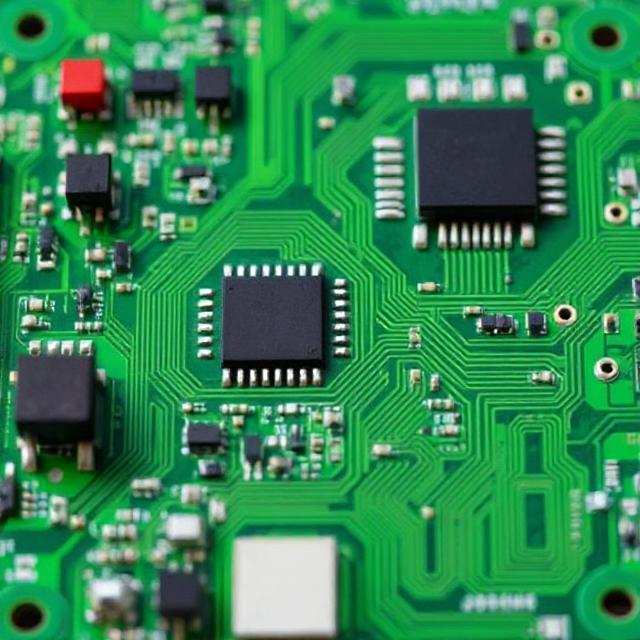Thermal simulation in electronics design is a process where engineers use computer software to predict and analyze the heat distribution within an electronic device or system before it’s physically built. It helps identify potential overheating issues and ensures that the device operates efficiently and safely.

Why is Thermal Simulation Important?
Electronics generate heat during operation. When devices like computers, smartphones, or power supplies are used, the components inside (like microchips, resistors, and transistors) produce heat. If this heat isn’t managed properly, it can:
- Damage components, leading to failures or shorter lifespans.
- Cause the device to overheat, which could make it unsafe to use.
- Lead to performance issues as components may slow down or become unstable when they get too hot.
Thermal simulation helps design devices that can manage heat effectively by identifying potential problems early in the design process.
How Does Thermal Simulation Work?
Thermal simulation uses mathematical models and computer software to simulate how heat will flow through a circuit or device. The software takes into account various factors like:
- The material properties of components (how they conduct heat)
- The size and shape of components
- The environmental conditions, like whether the device will be used in a hot or cold place
- The airflow around the device (whether there are fans, heat sinks, or other cooling mechanisms)
By setting up the device in a virtual environment, engineers can see how heat will build up and where it could cause problems.
Steps in Thermal Simulation:
- Creating a Model of the Circuit or Device:
- Engineers first create a 3D model of the device, which includes all the components like chips, resistors, capacitors, and even the casing or enclosure of the device.
- This model also includes information about the materials used (like copper, aluminum, plastic, etc.), which affect how heat is conducted or insulated.
- Defining Heat Sources:
- The next step is to define where heat is being generated. For example, a microprocessor in a computer or a power transistor in a power supply generates a lot of heat during operation.
- The software assigns the power dissipation (the amount of heat produced) to each component.
- Setting Environmental Conditions:
- Engineers input environmental factors, such as ambient temperature (the temperature of the room where the device will be used) and airflow (whether fans are used for cooling, or if the device is in a cramped space where heat can’t escape easily).
- Running the Simulation:
- The software then runs the simulation by calculating how heat flows through the device and how it spreads from one component to another.
- It also predicts how heat dissipates (or doesn’t dissipate) into the surroundings, taking into account any cooling methods (like heat sinks or fans) in place.
- Analyzing the Results:
- After running the simulation, engineers can view heat maps or graphs showing how hot different parts of the device are.
- These results show areas where the temperature exceeds safe limits or places where heat buildup is likely to occur.
- For example, the simulation might show that a microchip is getting too hot, which could affect its performance.
- Optimizing the Design:
- If the simulation shows overheating or inefficient heat distribution, engineers can adjust the design. For instance, they might:
- Add or improve cooling mechanisms like heat sinks, fans, or thermal pads.
- Change the placement of components to allow better airflow.
- Use materials that are better at heat conduction or insulation.
- After making adjustments, they run the simulation again to check if the changes improve heat distribution.
- If the simulation shows overheating or inefficient heat distribution, engineers can adjust the design. For instance, they might:
Tools Used in Thermal Simulation:
There are several software tools available for thermal simulation in electronics design. Some popular ones include:
- ANSYS Icepak: A powerful tool for simulating heat flow in electronics and other systems.
- COMSOL Multiphysics: Used for modeling and simulating heat transfer, alongside other physical properties.
- Flotherm: A software specifically designed for thermal management in electronics, helping to simulate airflow and heat dissipation.
- SolidWorks Flow Simulation: Often used for simulating both airflow and heat transfer in 3D models.
Benefits of Thermal Simulation:
- Prevents Overheating: By finding and solving overheating issues in the design phase, thermal simulation helps prevent expensive failures and ensures the longevity of the device.
- Optimizes Cooling: Engineers can test different cooling solutions (like fans or heat sinks) to see what works best before physically implementing them.
- Reduces Prototyping Costs: Instead of making multiple prototypes to test for heat management, engineers can simulate different scenarios on the computer. This saves both time and money.
- Improves Performance: A well-cooled device tends to perform better and more reliably, as excessive heat can cause slowdowns or malfunctions in sensitive components.
- Meets Safety Standards: Many devices need to meet safety standards for temperature limits. Thermal simulation ensures the product stays within safe operating temperatures.
Common Issues Detected by Thermal Simulation:
- Hotspots: Areas where heat builds up and can cause damage or performance degradation.
- Poor Airflow: Inadequate circulation of air that prevents heat from escaping.
- Inefficient Heat Dissipation: Components that generate too much heat but don’t have enough cooling to prevent overheating.
- Component Placement: Placing heat-sensitive components too close to heat-producing components can lead to overheating.
- Inadequate Cooling Mechanisms: Lack of heat sinks, fans, or other cooling measures where needed.
Example:
Imagine designing a smartphone. The processor generates a lot of heat while running apps, and the battery gets warm during charging. Through thermal simulation, engineers can predict how the heat from these components will spread throughout the device. They may find that the processor gets too hot near the battery, so they might adjust the layout, add a heat sink, or even design a better airflow path to cool both components down.
By doing this in the simulation phase, engineers can avoid overheating issues when the smartphone is actually used, and ensure that the device operates smoothly without getting too hot.
Summary:
Thermal simulation in electronics design helps engineers predict how heat will behave in a circuit or device. It ensures that electronic products don’t overheat, helping to prevent damage, performance issues, and safety concerns. With thermal simulation, engineers can test and optimize designs virtually, saving time, reducing costs, and improving the reliability and longevity of the device.











